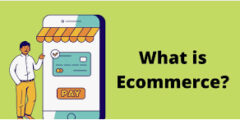Contents
As millennials, there is no one left who hasn’t bought, sold or at least browsed something online, right? This makes our job easier and makes it possible to compare prices. Here is the name of the magic world behind those “Add to Cart” buttons we click, online store windows and the shipments that arrive at our door: E-Commerce. Maybe you hear its name often, maybe you are thinking of moving your own business to the virtual world with digital marketing, or maybe you are just wondering what exactly this digital shopping frenzy means.
Whatever your reason is, you are in the right place! In this article, we will try to analyze what e-commerce is, how it works, its different types, advantages, challenges and future in a sincere manner, step by step.
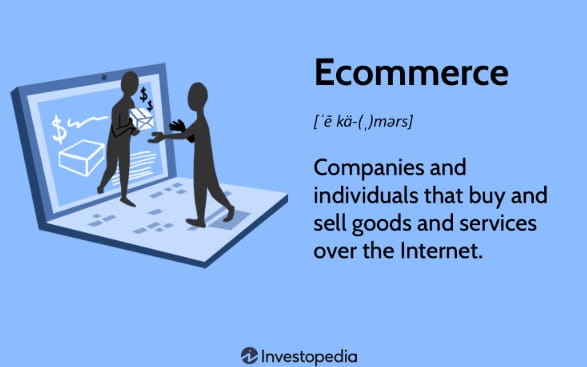
E-commerce has become so ingrained in our lives that we have taken it for granted. Now we even use consumer loans through mobile applications. Traces of digital commerce are everywhere, from the first phone screen we look at when we wake up in the morning to the discounts we check one last time before going to bed at night. While we used to have to go from store to store to buy a product, now we can order a product from the other side of the world in seconds.
This situation has rewritten the rules of the game not only for us consumers, but also for all businesses, from small shopkeepers to giant holdings. E-commerce has ceased to be just a sales channel, and has become an ecosystem, a way of doing business, and even a lifestyle.
Our aim in this comprehensive guide is to cover all aspects of the concept of e-commerce. Without getting bogged down in technical terms, we will seek the answer to the question “What is E-Commerce?” in a language that everyone can understand. Whether you are an entrepreneur who has just stepped into this world, an experienced digital marketer, or just a curious internet user; I am sure you will find something for yourself here.
If you are ready, fasten your seat belts and let’s embark on a delightful journey into the exciting world of e-sales!
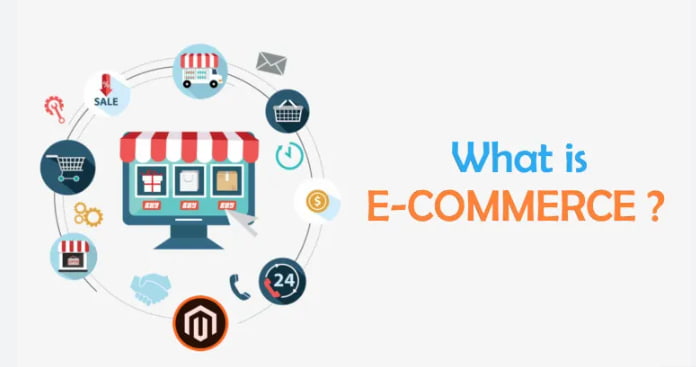
What is E-Commerce Exactly? Fundamentals and Scope
Let’s start with the simplest definition: E-commerce (Electronic Commerce) is the process of buying and selling goods and services over the internet or other electronic networks. In other words, instead of going to a physical store, it is to engage in commercial activities through your computer, tablet or smartphone. This is not limited to just purchasing products; it covers a very wide range such as online banking transactions, digital ticket sales, online service reservations (hotel, flight, etc.), digital content (music, movies, software) sales. In short, any transaction with commercial value that takes place electronically is the subject of e-commerce.
Although the origins of e-commerce actually date back to systems such as Electronic Funds Transfer (EFT) and Electronic Data Interchange (EDI) in the 1970s, before the widespread use of the internet, its explosion as we know it today began in the mid-1990s with the widespread use of the World Wide Web (www). With the emergence of pioneering platforms such as Amazon and eBay, people discovered the ease and potential of online shopping. Although there were security concerns and technological limitations at first, e-commerce grew exponentially over time with the development of secure payment systems, improvement of logistics networks and increased internet access, and reached its current gigantic size.
The physical space and time limitations of traditional trade have been eliminated thanks to electronic shopping.
So where does the scope of e-commerce end? Actually, it would be right to say that it does not end! Thinking of it as just setting up a website and selling products would be insufficient. E-commerce is a complex structure that includes digital marketing strategies (SEO, SEM, social media marketing, content marketing), customer relationship management (CRM), supply chain and logistics operations, secure payment infrastructures, data analysis and even legal regulations. The operation of a successful e-commerce requires all these components to work in harmony. Therefore, it would be more accurate to see e-commerce not just as an “online store” but as a new business model and ecosystem brought about by the digitalizing world.
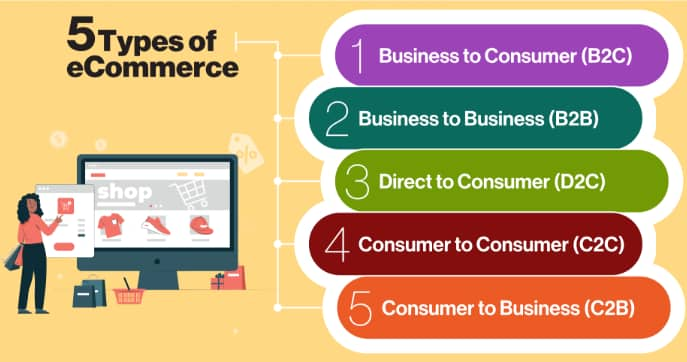
Types of E-Commerce: What are the Business Models? (B2C, B2B, C2C)
- When we say e-commerce, the first thing that comes to mind is usually shopping for our personal needs from an online store. However, e-commerce has various business models that take place between different participants. Understanding these models is important in terms of grasping the breadth of the electronic commerce world. Let’s examine the most common models together. The first and perhaps the most familiar one is the B2C (Business-to-Consumer) model. In this model, businesses sell their products or services directly to individual consumers who are end users. Clothing brands’ own websites, online markets, and platforms that sell electronic goods are examples of this model. Marketplaces that we all use frequently, such as Trendyol, Hepsiburada, and Amazon, are also largely based on the B2C model (of course, they also include other models).
- Another important model is the B2B (Business-to-Business) model. Here, commercial transactions take place between two businesses. For example, a raw material supplier selling to a manufacturer via an online platform, a software company offering corporate solutions to another company, or a wholesaler selling products to retailers are all included in B2B e-commerce. B2B transactions are usually larger in volume, may have more complex pricing and payment processes, and are based on long-term business relationships. Although it represents a much larger market than B2C in terms of volume, it is generally less visible because it does not directly touch the end user. However, it plays a critical role in terms of business efficiency and supply chain management.
- Apart from these, there are also models that allow individuals to trade among themselves. The C2C (Consumer-to-Consumer) model is the best example of this. In this model, individuals sell items they no longer use or products they produce to other individuals via online platforms. Platforms such as Sahibinden.com, Letgo, and eBay are typical examples of the C2C model. These platforms usually act as intermediaries that bring buyers and sellers together and may receive commissions from transactions. Finally, although more niche, we can also talk about the C2B (Consumer-to-Business) model, in which individuals sell their services or products to businesses.
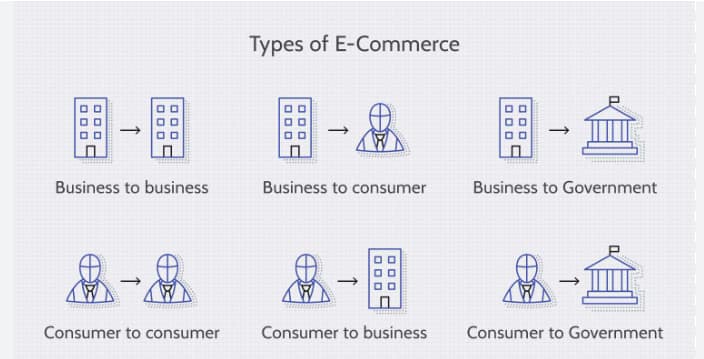
Why E-Commerce? Advantages for Businesses and Consumers
There are many reasons why e-commerce is so popular and growing rapidly. The numerous advantages it offers to both businesses and us consumers make it a strong alternative to traditional commerce and often even a complement. From a business perspective, perhaps the biggest advantage is the elimination of geographical boundaries. While a physical store can only serve customers in the region it is located in, an e-commerce site can potentially reach customers all over the world. This offers a great growth opportunity, especially for small and medium-sized businesses (SMEs).
In addition, the reduction of operational costs such as physical store rent, bills, and a large number of staff is another important advantage. Managing an e-commerce site is generally less costly than running a physical store.
Other important benefits for businesses include the ability to sell 24/7. The internet never sleeps, so neither does your e-commerce site! Customers can shop at any time of the day, any day of the week. This significantly increases sales potential. In addition, it is possible to collect and analyze detailed data on customer behavior thanks to e-commerce platforms. Data such as which products are viewed the most, basket averages, and customer demographics are invaluable for optimizing marketing strategies, providing personalized offers, and improving stock management.
So what are the advantages for us consumers? I guess the first thing that comes to mind is convenience and comfort. Is there anything like the freedom to shop in the comfort of our homes, even in our pajamas? Instead of wasting time in traffic and dealing with store crowds, we can reach the product we want with a few clicks. And what’s more, product variety. Thanks to the internet, we have access to products that we cannot find in local stores, different brands, and models. The ability to instantly compare prices from different sellers is also a great advantage for our budget. It is much easier to follow discounts and campaigns.
In addition, we can make more informed decisions by reading other users’ comments and evaluations before purchasing a product. In short, e-commerce makes our shopping experience faster, easier, more diverse, and generally more economical.
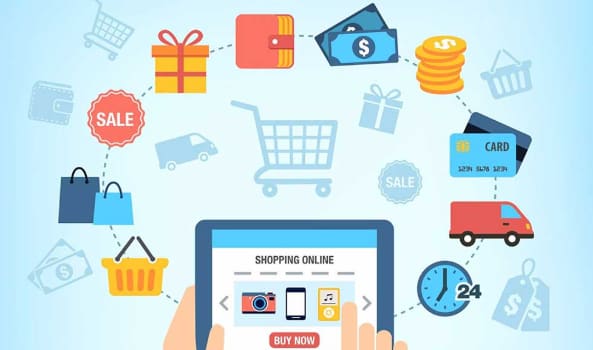
The Future of E-Commerce: Trends and Innovations Awaiting Us
E-commerce is not a static field, but a dynamic structure that constantly evolves and transforms. Advances in technology and changing consumer habits are shaping the future of e-commerce. So what awaits us in the near and medium term? One of the most obvious trends is the rise of Mobile Commerce (M-commerce). With the increase in smartphone use, an increasing portion of shopping is done via mobile devices. This requires businesses to invest in mobile-compatible (responsive) websites and user-friendly mobile applications. The spread of mobile payment systems and the development of in-app shopping features also support this trend.
Another important trend is the increasing use of artificial intelligence (AI) and machine learning in e-commerce. Artificial intelligence plays a key role in providing personalized shopping experiences by analyzing customer behavior. Customer satisfaction and sales are increased with applications such as product recommendations, personalized discounts, and smart search results. In addition, AI-supported chatbots can automate customer service processes, provide 24/7 support, and increase operational efficiency. Thanks to data analysis and forecasting capabilities, inventory management and pricing strategies are also becoming smarter.
Social commerce is also expected to gain importance in the future. With the integration of direct shopping features into social media platforms (Instagram, Facebook, Pinterest, TikTok, etc.), users can discover and purchase products without leaving the platform. The impact of influencer marketing and formats such as live stream shopping also feed social commerce. In addition to these, innovations such as shopping with voice assistants (Voice Commerce), the opportunity to try products virtually with augmented reality (AR), sustainability and green e-commerce applications (environmentally friendly packaging, reducing carbon footprint, etc.), fast delivery (quick commerce), and subscription models are among the important topics that will shape the future of e-commerce.
Businesses that keep up with these trends will be one step ahead of the competition.

Stepping Into the World of E-Commerce: Where to Start?
After all this talk, maybe your entrepreneurial spirit has come alive and you’ve said, “I want to do e-commerce too!” Great! However, careful planning is required before you step into this exciting world. The first step is to decide what you’re going to sell: defining a niche or product. Choosing an area that you’re passionate about, knowledgeable about, or see a gap in the market can make your job easier. Then, you need to clearly define your target audience. Who will you sell to? What are their needs, expectations, and online habits? The answers to these questions will affect many decisions, from your business model to your marketing strategies.
- The next step is to decide on your business model. Will you produce your own products, buy from wholesalers, or do dropshipping without keeping stock? Maybe it makes more sense to start by selling your products on marketplaces like Trendyol or Hepsiburada. Or will you set up your own online store using ready-made e-commerce infrastructures like Shopify or WooCommerce, or with special software? Each option has its own advantages and disadvantages. Your budget, technical knowledge and goals will determine this decision. You should do a good research and choose the platform and business model that suits you best.
- Finally, never ignore the planning and legal aspects of the business. Preparing a simple business plan will help you clarify your goals, strategies and financial projections. You should definitely research and fulfill legal requirements such as company establishment, taxation, distance sales contract, and personal data protection (KVKK). A reliable payment system integration and cargo agreements are also essential for the business. You don’t have to do everything perfectly at the beginning, but taking the basic steps correctly will help you build on a solid foundation. Remember, e-commerce is a marathon that requires constant learning and adaptation. Do plenty of research, follow developments in the sector and gain experience by starting with small steps.
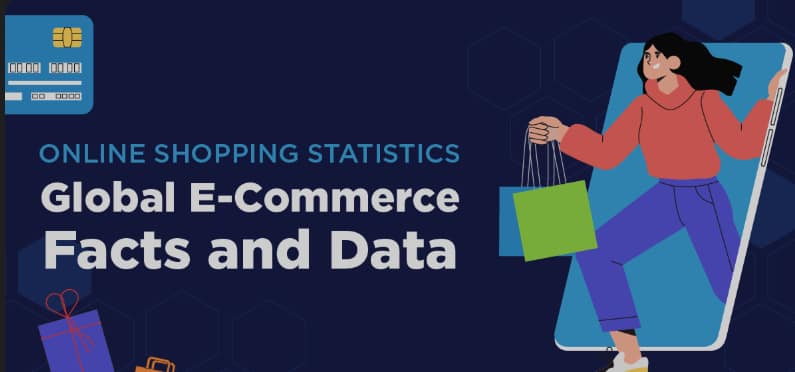
An Indispensable Part of Digital Transformation: E-Commerce
Yes, we had a pleasant journey into the depths of e-commerce. As we can see, e-commerce is much more than just buying and selling things online. It is a powerful digital transformation tool that radically changes the way businesses work, marketing strategies, and customer relations; and reshapes consumers’ shopping habits. This dynamic world, which touches every aspect of our lives and has become one of the locomotives of the economy, continues to grow and evolve every day.
While the advantages offered by e-commerce such as the global market, low costs, and data-driven strategies offer attractive opportunities for businesses, benefits such as convenience, variety, and the ability to compare prices also make consumers’ lives easier. Of course, there are obstacles to overcome such as competition, security concerns, and logistical difficulties. However, thanks to the development of technology and innovative solutions, overcoming these challenges is becoming more possible every day. Trends such as artificial intelligence, mobile commerce, and social commerce signal how exciting the future of e-commerce will be.
Whether you want to be digitally present as a business owner or you are trying to understand the dynamics of online shopping as a conscious consumer, e-commerce is a reality that cannot be ignored anymore. I hope this guide helps you understand the potential and subtleties of this world, as well as providing a comprehensive answer to the question “What is E-Commerce?”
Remember, the digital world is constantly changing, and understanding e-commerce, which is at the heart of this change, means keeping up with the future. The doors of the digital world are wide open, it is up to you to explore!
